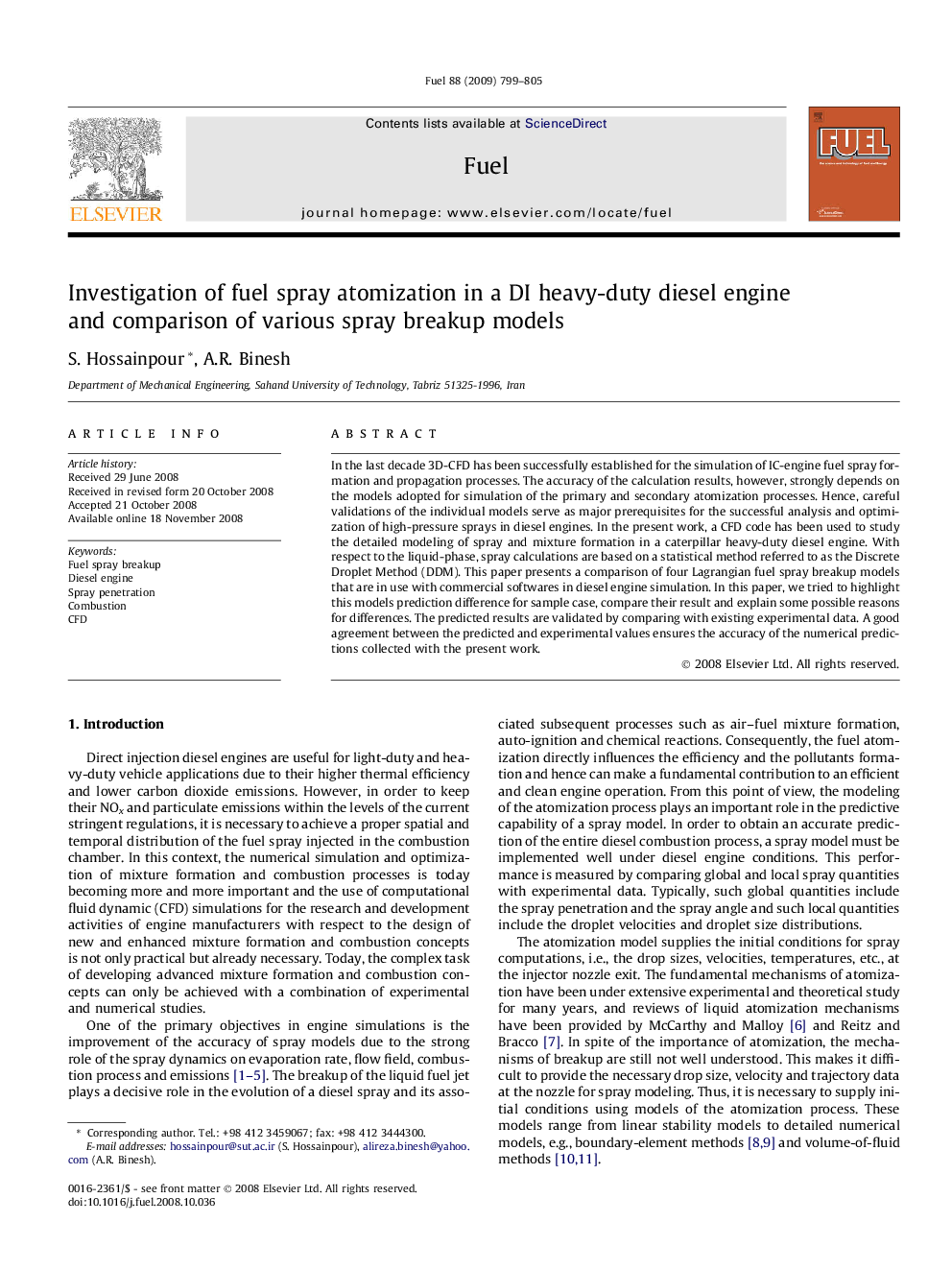| Article ID | Journal | Published Year | Pages | File Type |
|---|---|---|---|---|
| 207366 | Fuel | 2009 | 7 Pages |
In the last decade 3D-CFD has been successfully established for the simulation of IC-engine fuel spray formation and propagation processes. The accuracy of the calculation results, however, strongly depends on the models adopted for simulation of the primary and secondary atomization processes. Hence, careful validations of the individual models serve as major prerequisites for the successful analysis and optimization of high-pressure sprays in diesel engines. In the present work, a CFD code has been used to study the detailed modeling of spray and mixture formation in a caterpillar heavy-duty diesel engine. With respect to the liquid-phase, spray calculations are based on a statistical method referred to as the Discrete Droplet Method (DDM). This paper presents a comparison of four Lagrangian fuel spray breakup models that are in use with commercial softwares in diesel engine simulation. In this paper, we tried to highlight this models prediction difference for sample case, compare their result and explain some possible reasons for differences. The predicted results are validated by comparing with existing experimental data. A good agreement between the predicted and experimental values ensures the accuracy of the numerical predictions collected with the present work.
